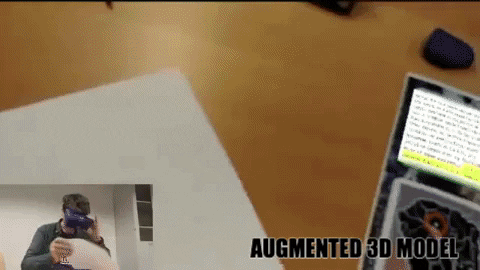Harnessing the Power of Universal Design: Making AR Accessible and Usable for the Masses
Augmented Reality (AR) has emerged as a transformative technology, blending the virtual and physical worlds to create interactive and immersive experiences. However, for AR to truly benefit everyone, it must be designed with accessibility and usability in mind. This blog post explores how the principles of Universal Design (UD) have been leveraged to develop three educational AR applications, making them inclusive, intuitive, and empowering for diverse users. These applications focus on nature, anatomy, and architectural history, showcasing the potential of AR to enhance learning experiences. Additionally, the blog post highlights the short-term learning outcomes and advantages of these AR apps compared to their paper-based equivalents.
The Power of Universal Design
Universal Design is a design philosophy that aims to create products, environments, and experiences that are usable by the widest range of people, regardless of their age, abilities, or background. By embracing the seven principles of UD—equitable use, flexibility in use, simple and intuitive use, perceptible information, tolerance for error, low physical effort, and size and space for approach and use—AR applications can become more accessible and inclusive.
Anatomy: Learning Body Parts under the Human Skull: The first AR application delves into the intricacies of anatomy, allowing users to explore the human skull and learn about the various body parts it houses. By employing UD principles, the app offers intuitive controls and navigation. Users can manipulate the virtual skull, zoom in on specific areas, and access detailed information about each body part. This multi-modal approach caters to different learning styles and ensures that the app is usable for individuals with varying levels of anatomical knowledge.
Nature: Learning about the Marine Toad: The second educational AR application focuses on nature, specifically the marine toad. Through this app, users can explore the habitat, behavior, and characteristics of the toad in a captivating and interactive manner. Leveraging UD principles, the app provides multiple modes of interaction, including handheld and head-mounted options. Users can choose the mode that suits their preferences and physical abilities, ensuring that the app accommodates diverse needs.
To assess the effectiveness of these AR apps, short-term learning outcomes were measured and compared to paper-based equivalents that emphasized AR's benefits. The results demonstrated several advantages of the AR apps:
Increased engagement: The interactive and immersive nature of AR significantly enhanced user engagement, fostering a deeper understanding of the subject matter.
Multi-sensory learning: AR apps offered multi-sensory experiences, combining visual, auditory, and tactile feedback. This multi-modal approach catered to diverse learning styles, benefiting a wide range of users.
Personalized learning: AR apps allow users to learn at their own pace and explore content based on their interests. The flexibility offered by UD principles empowered users to tailor the experience to their needs.
Inclusive design: The universally designed AR apps eliminated the need for additional assistive technologies, making them accessible to a broad user base. This inclusivity promotes equity and equal access to educational resources.
Conclusion
By harnessing the power of Universal Design, AR applications can be made accessible and usable for the masses, empowering individuals with diverse backgrounds and abilities to engage in immersive educational experiences. The three AR apps developed within the topics of nature, anatomy, and architecture history exemplify the successful implementation of UD principles. These apps not only cater to a wide range of users but also demonstrate advantages over traditional learning materials. The potential of AR in education is vast, and by embracing UD, we can ensure that this transformative technology benefits everyone, fostering inclusive and equitable learning environments.
Universal Design, AR, accessibility, usability, educational apps, nature, marine toad, anatomy, human skull, architecture history, Angkor Wat Temple, inclusive design, diverse users, short-term learning outcomes, advantages of AR


